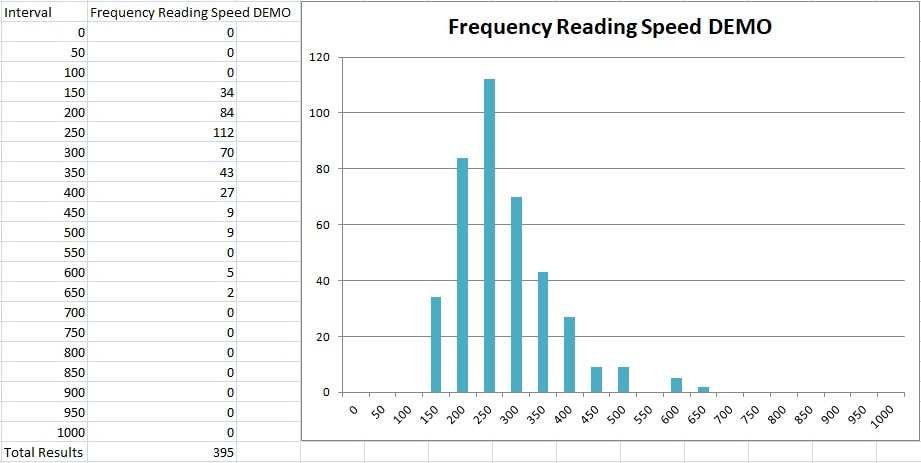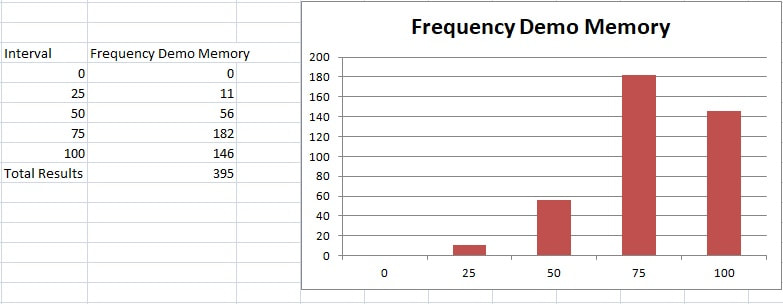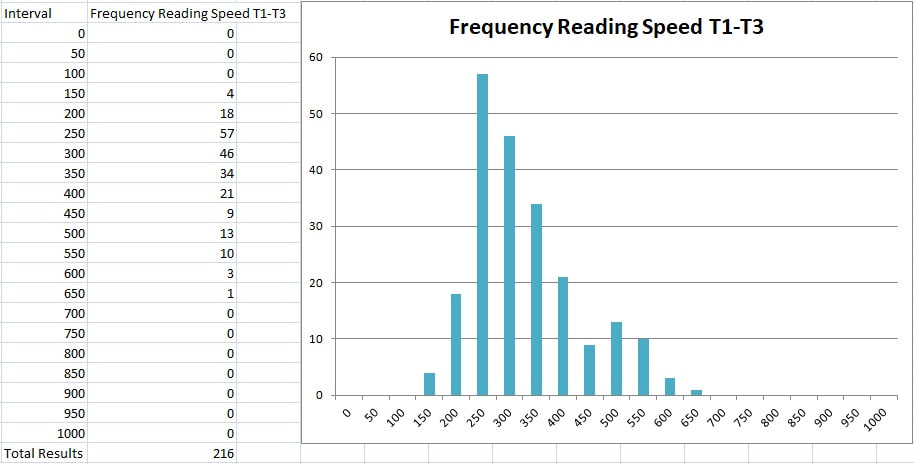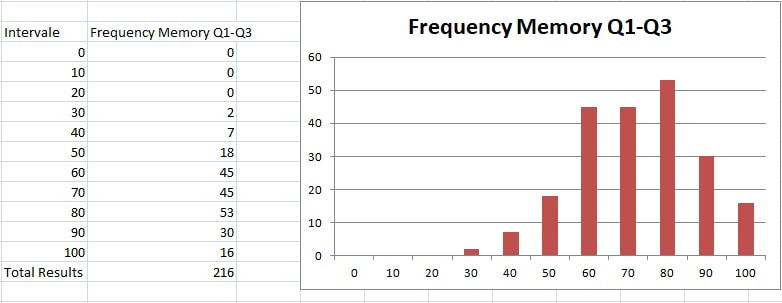|
SpeeRead - Instruction System for Speed Reading and Effective Learning SpeeRead online platform is the key and central element of the expert training system for optimized speed reading. It is available in romanian language since august 2015. Soon it will be available also in english language. During this time, important data about rapid reading performances provided by users has been gathered. This article purpose is to demonstrate the statistic reality of some statements that you will find in many places on this website. The focus will be here on the average reading speed and average memory capacity. The data gathered till now came from two sources:
On the left side of the graphics you can find the frequencies intervals and the how many results belong to each frequency. The graphics are shown to us the shape of each distribution and were are the most of the results placed. Here is the information I want to highlight. For the DEMO test (a short text with approximate 200 words) the most of the reading speed results are placed in the following intervals: 150-200 wpm, 200-250 wpm and 250-300 wpm. The most frequent memory capacity is 75% (the memory questionnaire has only 4 questions). The average reading speed calculated for this 395 valid results is 255 wpm. The average memory capacity in this case is 79%. The statements that you will find in many places on this website that are supported by this results sounds like this: The average reading speed is around 250-300 wpm and the average memory capacity is around 70% when you read a text entierly, for the first time and answer some questions from that text. Let's see now the results for T1-T3 and Q1-Q3 and than discuss them: This results are gathered BEFORE starting the training program by the users. So, they have the same statistical value like the DEMO results. 216 results were found valid. The most of the results for reading speed are in the following intervals: 200-250 wpm, 250-300 wpm and 300-350 wpm. The most of the results for memory capacity are in the interval of 70-80%. The texts used here are longer then for DEMO (1000-1500 words) and each questionnaire has 10 questions. The average reading speed in this case is 303 wpm and the average memory capacity is 72%. This results show us that the statements we made for average reading speed and memory capacity for DEMO results are true also T1-T3 and Q1-Q3 results.
There are also some small diferences between this two sources of the results. The maximum density interval for reading speed are different and the average result is near 250 wpm for DEMO and near 300 wpm for T1-T3. This can be an explanation for the fact that the DEMO text is a technical one, so it is a little bit more difficult to read than the T1 simple literature text. For memory capacity we can see more precise estimated results for Q1-Q3 comparing to DEMO. Explanation can be related to the number of questions for each type of questionnaire. A 10 questions questionnaire is more precise than a 4 question one and it gaves us more accurate results. © Copyright 2015-2020 SpeeRead For more information contact us: [email protected] Comments are closed.
|
BLOGCalin DragomanPsychologist - Passionate about understanding and optimizing the human mind. Categories
All
|





 RSS Feed
RSS Feed